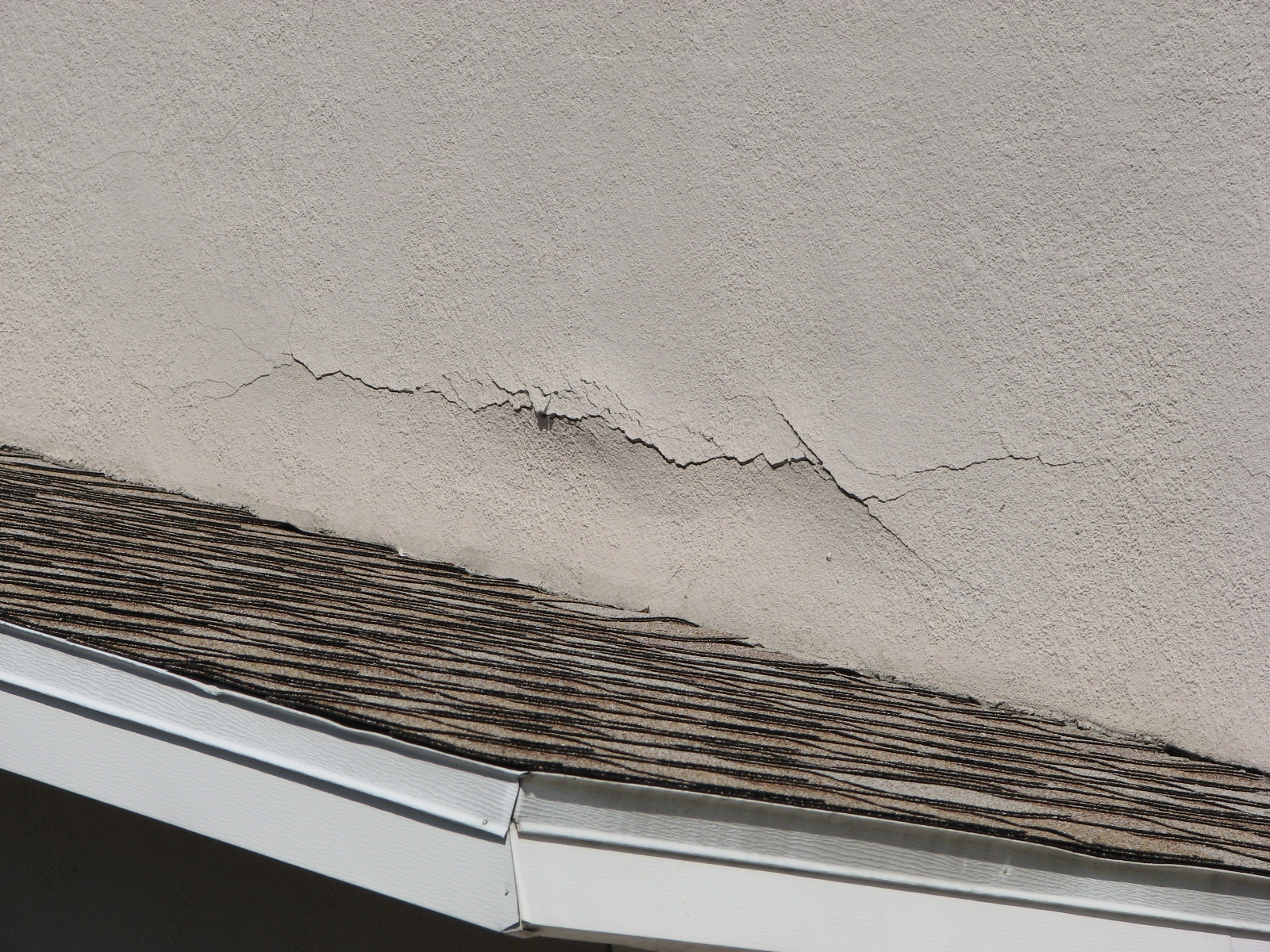Stucco damage is a standard problem homeowners face when dealing with their home’s interior. Stucco is a cement-like material commonly used to coat the outside of houses and buildings, and it can be pretty durable if properly maintained. Unfortunately, stucco can become damaged over time due to weather, everyday wear and tear, improper installation, or insect infestation. Identifying stucco damage can help you decide whether repairs and the average cost are needed.

Stucco damage typically falls into two categories: structural and cosmetic. Structural damage may include cracks in the stucco or other signs of deterioration, such as moisture seepage. This type of damage needs to be addressed as soon as possible because it can lead to further problems like mold growth or structural failure of the walls. Cosmetic damage includes chips, stains, discoloration, efflorescence (white powdery deposits on the surface), or even paint peeling off the surface. This damage doesn’t necessarily need to be repaired but could lower your home’s appeal.
Stucco damage types
- Cracks: Stucco can develop cracks over time due to settling, shifting of the foundation, or moisture damage. Small cracks may not be a significant concern, but larger cracks can allow water to seep in and cause further damage.
- Discoloration: Stucco can become discolored due to exposure to elements such as sunlight, rain, and wind. Mold or mildew growth can also cause discoloration, harming health.
- Bulging or bubbling: Stucco can bulge or bubble outwards, a sign of water damage. This is often caused by improper installation or moisture trapped behind the stucco.
- Efflorescence: Efflorescence is a white, powdery substance that appears on the surface of the stucco. This is caused by water evaporating and leaving behind mineral deposits. Efflorescence is not harmful to health, but it can be unsightly.
- Loose or missing stucco: Stucco can become loose or fall off entirely due to age, weather damage, or improper installation. This can allow water to seep in and cause further damage.
- Staining: Stucco can become stained due to exposure to pollutants such as car exhaust or landscaping elements, such as mulch. Staining is often more of a cosmetic issue but can be challenging.
To identify stucco damage, start by inspecting the exterior walls for cracking or crumbling. You should also check for blisters or bubbles in the stucco, which indicate water seepage underneath the surface and possible wall rot. Other signs of potential damage include discoloration from dirt buildup, patches where paint has peeled off from age, or lack of maintenance.
Does Homeowners Insurance Cover Stucco Damage?
Insurance companies are more likely to accept stucco damage claims caused by sudden and unexpected events, such as storm damage, rather than the damage that occurs gradually over time due to wear and tear. Examples of stucco damage types that may be covered by insurance include:
- Storm damage: Severe weather events, such as hail or wind storms, can cause damage to stucco sidings, such as cracks, dents, and chips.
- Water damage: Stucco can be susceptible to water damage if moisture seeps behind the siding. This can cause discoloration, bulging or bubbling, and other forms of damage.
- Impact damage: Stucco can be damaged by impact from objects such as falling branches, debris, or vehicles.
- Fire damage: Stucco siding can be damaged or destroyed by fire, leaving the building vulnerable to further damage.
Once you have identified possible stucco damage, evaluating its extent before making any repair decisions is essential. If only small areas are affected, then simple spot repairs may suffice, while larger areas may require complete replacement of the entire wall at a considerable cost increase. The average cost for repairing stucco will depend on several factors, such as the size and severity of the damage, labor costs, materials needed, local labor rates/material costs, whether you hire a professional contractor vs. doing it yourself, etc.
If your stucco has more than cosmetic issues, consider contacting a professional contractor who specializes in this type of repair work. They can assess what needs to be done and provide an estimate for repair costs before committing to anything too costly or extensive. It’s Essential to ensure that any repair work complies with local building codes, so speak with your local building department before starting any projects related to stucco repairs or replacements.
When protecting your home, homeowners insurance is one of the most important investments you can make. This policy covers many risks associated with owning a house and protects against damage caused by fires, floods, and stucco damage. But what exactly does homeowners insurance cover when it comes to stucco damage?
Most homeowners insurance policies generally cover some repairs related to stucco damage. This includes repair costs for cracks and holes caused by normal wear and tear, water infiltration, and adverse weather conditions. However, it’s important to note that coverage may vary based on where you live and the specifics of your policy. Additionally, some policies may not fully cover all types of stucco damage or require additional coverage for certain repair costs.
Before assuming that your policy will or won’t want to cause damage, check with your insurer for details about the type of coverage included. They can help explain what kinds of repairs might be eligible for reimbursement and let you know if there are any limitations or exclusions related to stucco damage claims. It’s important to remember that even if your policy provides some coverage for repairs related to stucco damage, you may still have to pay out-of-pocket costs before your insurer reimburses you.
If you’re concerned about the possibility of incurring expenses due to stucco damage, there are several steps you can take beyond buying homeowners insurance that may help minimize the risk. For example, hiring a qualified home inspector before purchasing a home can alert you to any issues with the stucco walls so that they can be addressed before closing on the home sale. Additionally, regular maintenance—such as making sure gutters are clean and applying sealant around windows—can go a long way toward keeping moisture out and further reducing the chances of needing costly repairs down the road.
Whether or not your homeohomeowner’srance covers stucco damage ultimately depends on a variety of factors, including where you live, what kind of policy you have bought (and whether it has remarkable riders), as well as how much effort is put into preventive maintenance measures like regular inspections and sealant application. Ultimately if the,, eretthereingwnothingt’s havn understanding of what is protected under your specific homeohomeowner’srance policy will gthat ivgivece knowi,ngof knowledge thathing happens due to unexpected stucco damages, then at least part (if not all) of those costs could be covered by an insurer.
